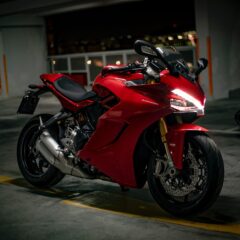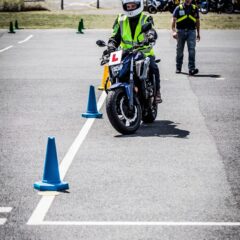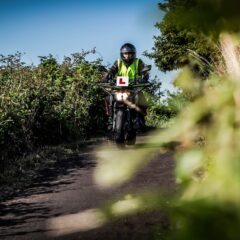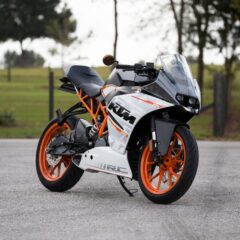
7 Top Motorcycle Accessories
With Christmas just around the corner, you might be wondering what to get your favourite motorcycle enthusiast or even a little something for yoursel...
 Phoenix Motorcycle Training LTD
Phoenix Motorcycle Training LTD
 Phoenix Motorcycle Training LTD
Phoenix Motorcycle Training LTD

The quickest way to get your motorcycle licence is with an intensive motorcycle course. Otherwise referred to as DAS training, the Direct Access Scheme enables you to gain your full licence quicker.
All motorcycle licencing begins with Compulsory Basic Training (CBT). The CBT is designed to teach riders the foundational skills needed to ride on UK roads safely. Once you have your CBT, you can build your skill on two wheels. To develop your skill faster, an intensive motorbike course or DAS training is a great choice.
There are lots of different ways you can get your motorcycle licence. The most relaxed way is to qualify for your CBT certificate. Over the two years it’s valid, you build your skill on the road.
At the end of those two years, you can re-qualify for a CBT certificate to remain riding a 125cc motorcycle, or train for your motorcycle licence. This relaxed approach to learning to ride lets you gain more real-world experience. However, you’ll grow your skills at your own rate.
An intensive motorcycle course lets you take your training on the highest-powered bike for your age. Training with Phoenix for a full licence is designed to suit your ability and learning style. This approach lets you build your skill faster. You’ll also become familiar with a higher-powered bike and be able to take your licence test faster.
If you’re older than 24, an intensive motorbike course lets you go straight to a full, unrestricted motorcycle licence. If you’re younger than 24, intensive motorcycle training helps you qualify for the highest restricted motorcycle licence possible.
Motorcycle licencing is tied to the power of the machine you choose to ride and the age of the rider. The younger you are, the lower the power of the motorcycle you’ll be allowed to ride.
Motorcycle licencing laws evolved a little slower than motorcycle manufacturing techniques and technology. Today’s motorcycles are far more powerful and faster than when first invented. So, motorcycle licencing rules have changed accordingly. Learning to ride properly is crucial for staying safe on the roads.
The simplest way to understand the age and power-to-weight ratio restrictions is with a chart. The ages, motorcycle licence levels and applicable engine sizes are detailed below.
| Licence type | Age Range | Size of training bike | Licence requirements | Size of bike you can ride after passing training |
| CBT | 16 | Up to 125cc | Provisional or full UK driving licence | 16 y.o – 50cc 17 y.o + up to 125cc |
| AM | 16+ | 50cc | Compulsory Basic Training (CBT), theory test, practical test on an all-powered 2-wheeled moped. | 50cc |
| A1 | 17 – 19+ | 125cc | Compulsory Basic Training (CBT), theory test, practical test | 125cc |
| A2 | 19 – 24 | 500cc | Theory and practical test (CBT must have already been obtained to complete these tests) or 2 years experience on A1 motorbike and a practical test | 35Kw (approx. 550 – 600cc) |
| A (full, unrestricted motorcycle licence) | 24 + (or after holding an A2 licence for a minimum of 2 years) | 600cc | CBT, theory and practical test at 24 years of age or older, or hold an A2 licence for a minimum of 2 years and pass a practical test at age 21 or older | Any sized bike |
The shortest answer is ‘No’. Compulsory basic training is just that – compulsory. This foundational training provides you with the bare minimum level of skill needed to control a motorcycle on UK roads.
There is no rule for how long you must ride with a CBT certificate before moving onto a higher-level motorcycle licence. We recommend riding with a CBT certificate for at least a week before booking your intensive motorcycle course and training for a higher-level licence.
Full licence training with Phoenix is designed to thoroughly prepare you for your motorcycle licence test. You’ll train on the highest-powered bike possible for your age. We’ll take care of the insurance, motorcycle gear and other details. You just need to bring yourself, your lunch, and wear a sturdy pair of boots.
Our full licence DAS training is delivered to a maximum of two students for every instructor. You’ll start by practising in our training centre, going over specific manoeuvers and emergency stops. Once you’re comfortable riding in the training grounds, we’ll take to the open road.
When riding on public roads, our instructor will be in contact via radio. The on-road training will be done in the same town you plan to take your test. We’ll get you familiar and comfortable with the same on-road manoeuvers you’ll perform in your licence test. Along with training you for your licence test, we’ll make sure you’re safe and confident on your motorcycle too.
Phoenix motorcycle training days for the intensive motorcycle course typically last for 6 hours. Of course, every rider is different and you may need to train for a little longer, or a little less. We’ll keep you updated about your progress throughout the day. We also work to build skills in your weaker areas to use your time wisely.
Before taking any practical motorcycle licence tests, you’ll need to pass your theory test. There are a few exceptions to the rules about motorcycle theory testing. If you passed a moped test after July 1st, 1996 and only want to test on a small A1 licence-level small bike, you won’t need to take your theory test. Similarly, upgrading your motorcycle licence under the progressive access rules negates the need to take a motorcycle theory test.
Even if you already hold a car licence, the motorcycle theory test needs to be completed successfully. This is because riding a motorcycle on the road is very different from driving a car. You’ll need to be alert to different hazards and different rules that apply to motorcycles than cars.
Ideally, you should take your motorcycle licence test as close to your training as possible. We book our intensive motorbike course training days according to the testing schedule we have pre-booked with the DVSA. This means you won’t need to wait months after your training to take your licence test.
Motorcycle licence tests have two parts. Both are practical tests that focus on slightly different riding skills. Different riding conditions are designed for module 1 and module 2.
Module 1 of the motorcycle licence test is taken in the DVSA-approved testing area. This is away from public roads where the tarmac is smooth and riding conditions are safe.
You’ll take the second practical test, module 2 on public roads. The DVSA examiner will follow you on their motorcycle. You’ll be in radio contact with them so they can ask you to perform various on-road manoeuvers and watch you complete them.
At the end of each test, you’ll find out if you passed and which faults you made, if any. If you fail module 1, you’ll need to retake it before moving on to module 2.
The best way to make sure you book the right intensive motorcycle course is to talk to one of our team. They’ll be able to answer all of your questions and can book you on the right training course. Once you’ve gained your licence, it’s a great idea to improve your skill with advanced rider training; it’ll keep you safer on the road.

With Christmas just around the corner, you might be wondering what to get your favourite motorcycle enthusiast or even a little something for yoursel...

If you love motorcycle riding, you’ve probably daydreamed about riding a motorbike for a living. A professional racer or stunt rider is OK for some...

Getting a UK motorcycle licence can seem a complicated process. Particularly when compared to a driving licence for a car. Whether you choose the pro...
This website uses cookies to personalise content, ads, and analyse traffic, sharing data with partners who may combine it with other information. See our Privacy Policy for more information.